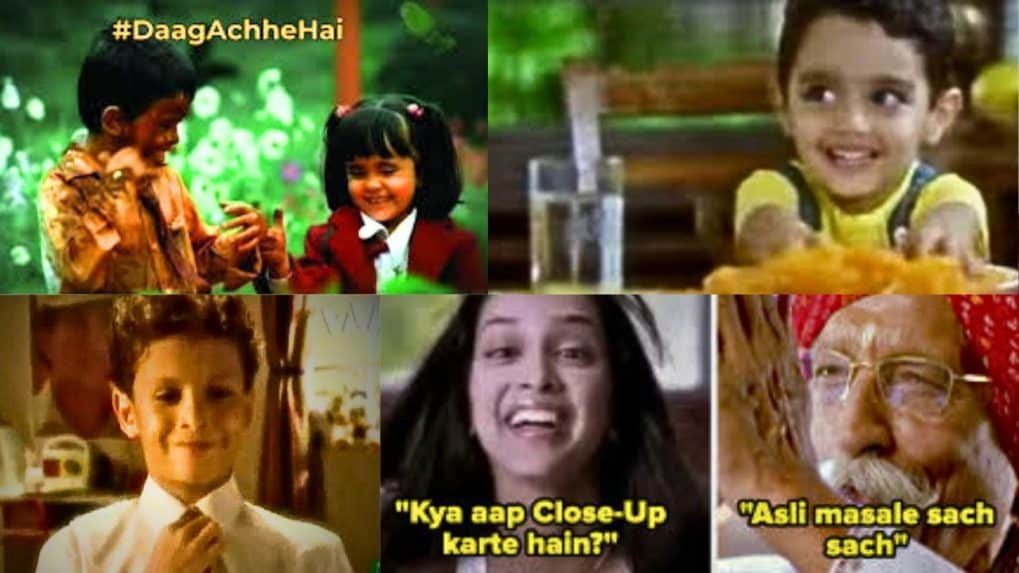Virality Over Value? Is India’s iconic brand-building playbook at risk in age of influencers
As marketers chase likes and reels, industry veterans warn that emotional resonance, cultural memory, and brand equity are fading fast. Is influencer marketing amplifying or eroding what made Indian advertising iconic?
ADVERTISEMENT
It’s hard to recall the last time a jingle stuck in your head, or a tagline became a dinner-table phrase. "Daag acche hain", "Lifebuoy hai jahan, tandurusti hai wahan", “Ho ho school time, Action ka school time". These weren’t just punchlines, they were cultural currency.
Today, in a digital landscape awash with 15-second Reels, viral filters, and creator collabs, Indian advertising is at a tipping point. The question confronting marketers isn’t whether influencer marketing works- it’s whether it builds anything that lasts.
Read more: Why nostalgia works in advertising?
Unilever, one of the world's most seasoned advertisers, has pledged to double its investment in influencers and social media, allocating a staggering 50% of its global ad budget to these channels. But look closer, and you’ll notice something ironic: its most enduring brands- Dove, Lifebuoy, Vaseline weren’t built by creators. They were shaped by decades of consistent, insight-led storytelling, not by short-lived virality.
This tension is at the heart of a larger debate reshaping brand strategy in India. Does influencer-driven content grab attention at the cost of memory? Are we exchanging long-term brand love for fleeting reach?
For Harshdeep Chhabra, Head- Global Media at GCPL, it’s not about replacing tradition, it’s about amplifying it.
“Influencer marketing has transformed how we connect with audiences. But true brand equity is built over years of consistent storytelling. The next generation might engage with creators daily, but the brands that remain iconic will be the ones that continue to craft stories and experiences that live beyond a single post or trend," he points out.
“We’re renting attention, not owning meaning”
According to Anushka Sanghvi, CMO of Nofiltr Group, influencer content grabs eyeballs, but not always hearts. “Attention is not the same as affinity. What makes a brand stick isn’t just who says it, but what is being said and how consistently. Without strong brand meaning, we’re just renting attention,” she warns.
That transactional tone is echoed by Irina Bonich, Marketing Director at Oriflame India. “Consumers can tell when a creator believes in the product. That credibility doesn’t come from scripts or sponsorships alone. The influencer economy risks becoming hollow when novelty replaces narrative.”
A shift from storytelling to scroll-stopping
Brand leaders across sectors agree that the gravitational pull of short-term metrics: likes, shares, reach is skewing priorities. “There’s no denying that short-term metrics get a lot of attention, but they don’t always translate into real brand value,” says Rajeev Jain, SVP, Corporate Marketing at DS Group. “We’re optimising for visibility, not meaning.”
Shankar Prasad, Founder & CEO of Plum, likens this to relying on a car’s speedometer while ignoring its compass. “Likes and reach are indicators— but are we being trusted? Are we being recommended? That’s what brand equity is,” he says. Plum, he notes, has been shaped not just by influencers but also by customer stories, DMs, and reviews.
Manish Chowdhary, Co-founder of WOW Skin Science, agrees. “These metrics provide quick feedback, but real brand equity comes from sustained consumer trust and product experience. Influencer campaigns can do both, but they must stay rooted in core brand values.”
The vanishing jingle and what it signals
As the rush for virality intensifies, many are noticing the quiet disappearance of the kind of iconic storytelling, jingles, and taglines that once defined Indian advertising.
“We’ve noticed a gradual shift. Jingles had emotional weight because they were built over time,” says Jain. “Today, everything is built for quick traction. Some brands are striking a balance, but many long-lasting cues are being compromised.”
Meanwhile, Oriflame’s Bonich calls today’s brand landscape 'atomised'.
“Instead of one voice speaking to millions, we now have thousands of voices shaping a brand in real time. That’s not a loss—it’s a shift,” she says.
Even WOW Skin Science doesn’t view jingles as obsolete. “They’re still relevant and effective. But now, brands are also exploring newer formats to stay digitally relevant,” Chowdhary says.
Will Gen Z remember your tagline?
With creators dominating brand conversations, will Gen Z ever recall a brand line like “Daag acche hain”?
“The formats have changed, but the opportunity to create recall is still alive,” says Sanghvi. “Today’s equivalent might be an audio trend, a meme, a creator’s punchline. But the emotion is what sticks.”
Prasad puts it more bluntly. “Things are more transient now. The task is the same— but the method has changed, completely.”
The concern, says Bonich, isn’t just format, it’s emotional depth. “Taglines endured because they reflected something honest. Today, people will remember a brand that aligned with their values. That might not be a line, it might be a moment.”
Indeed, DS Group’s Jain notes that Gen Z may not remember a slogan but they will recall how a brand made them feel, especially if delivered authentically through creators or communities.
So where do we go from here?
The consensus is clear: influencer marketing is here to stay, but it cannot be the cornerstone of brand strategy. It can’t replace brand purpose, emotional resonance, or insight-led storytelling—it can only echo it.
As Sanghvi puts it, “Creators aren’t the problem—how brands are using them is. Treat creators as co-architects, not distribution channels. That’s when storytelling comes back.”
Or as GCPL’s Chhabra aptly sums up. “The brands that remain iconic will be the ones that craft stories and experiences that live beyond a single post or trend.”
In a digital world obsessed with what’s now, perhaps the most radical thing a brand can do is build for later.

